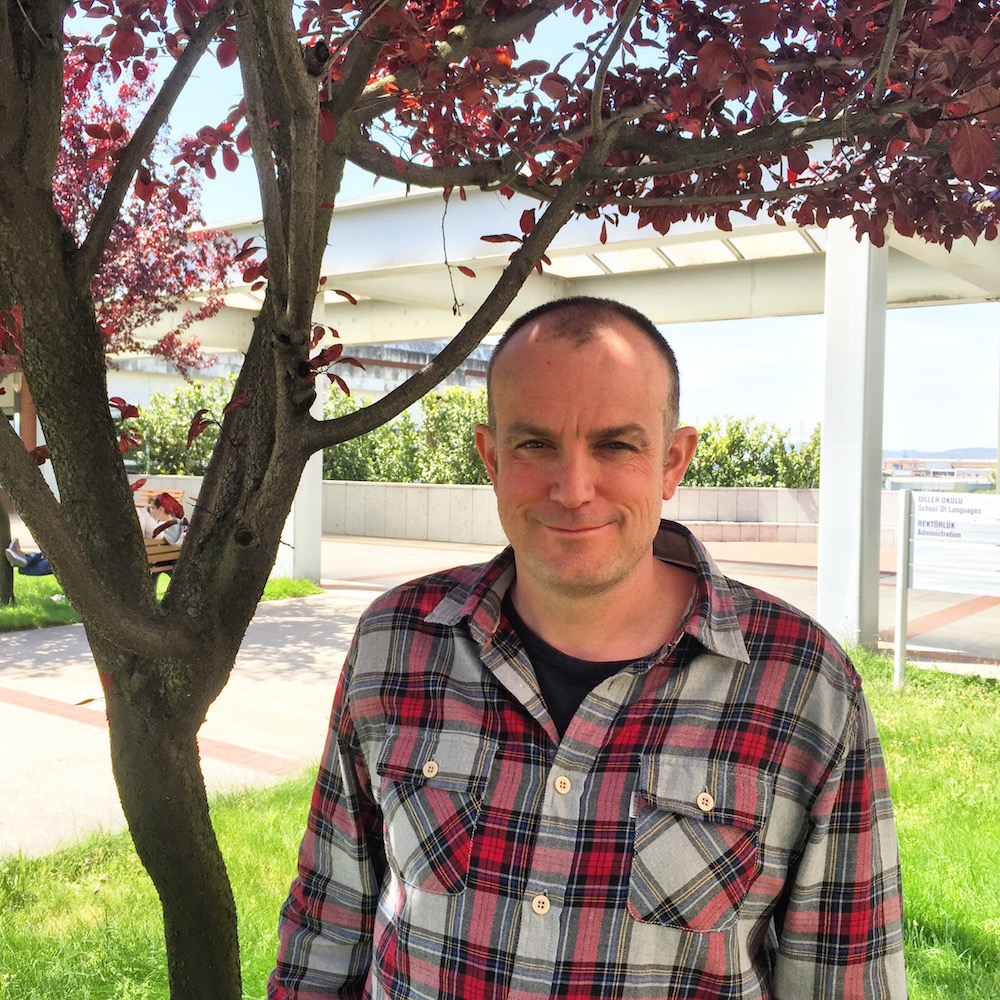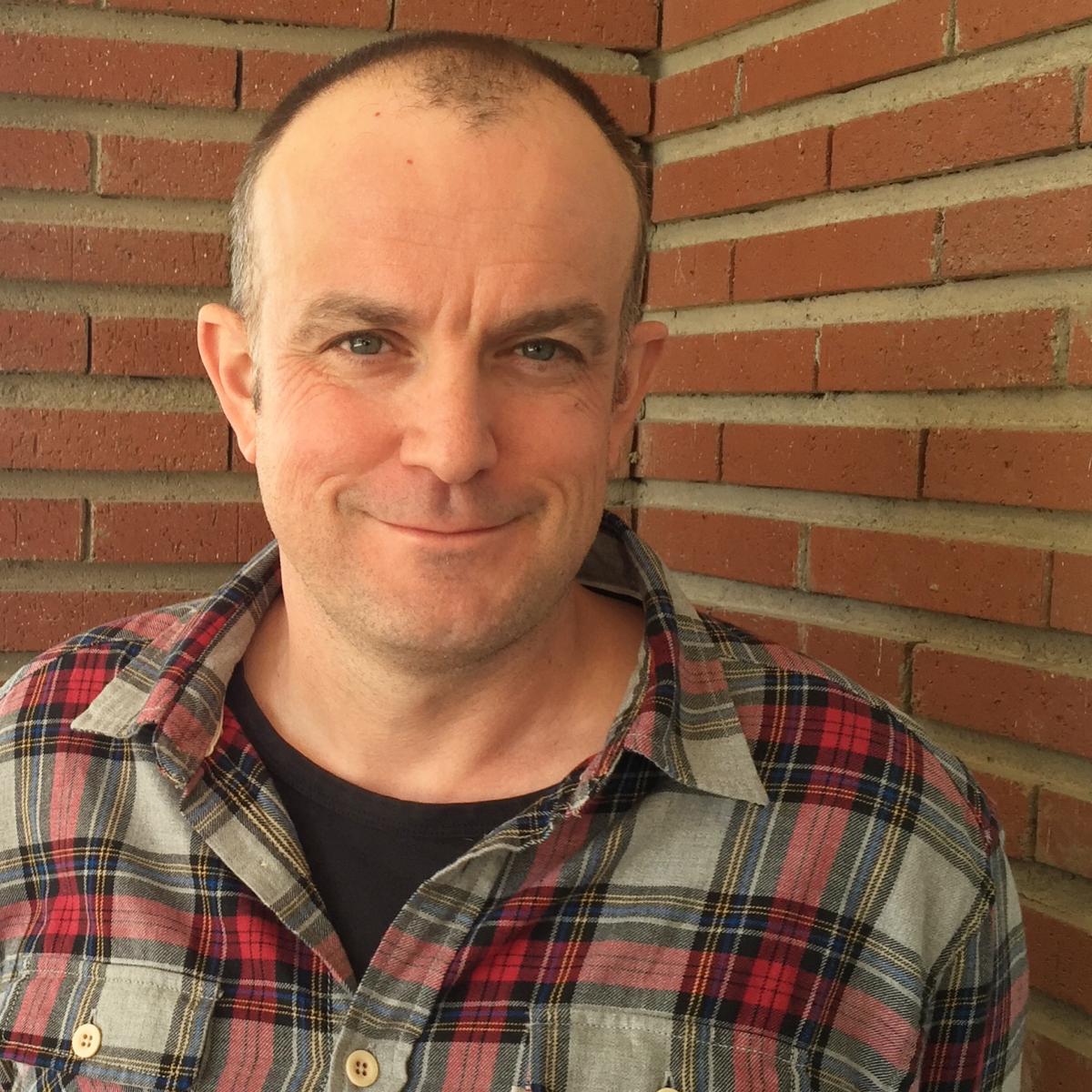
Andrew Christopher Bosson's IATEFL Manchester Notes
Leaving the cold, wind and rain of Istanbul for the sunshine and warmth of Manchester for the IATEFL was a unique experience but not one to last for too long, with the natural meteorological order being soon re-established. Not to worry though, as inside the Manchester Convention Centre, the site of this 2015’s IATEFL conference, the atmosphere was warm with enthusiasm in contrast to the grey skies outside.
Although there was so much I could write about I have chosen a few general areas that caught my interest as I meandered through the conference. I have avoided the plenary speakers as there is plenty from them on the conference website if you are interested.
 Digital Technology
Digital Technology
There was plenty of discussion of the uses of Digital Technology (DT) in many of the sessions but there was also a noticeable tempering of the rush to DT as a universal panacea for all teaching and learning problems. Instead there was a tendency for a much more principled use of DTs.
Ken Wilson’s presentation, Only connect: seven strategies for ensuring teacher-student Communication, suggested seven activities to encourage face-to-face communication in classrooms where DTs and classroom layout may otherwise inhibit it. That said, one of the activities involved a great example of the principled, learner centred use of DT. Learners (in this case the IATEFL audience) were asked to open the photograph file on their phones and find photos that feature a particular subject food, a celebration, an animal, a famous person...etc and then discuss it with their partner. It generated a lot of discussion and it is easy to see this being used in the classroom for many linguistic purposes.
***
Another learner-centred use of technology, in a session of great ideas, came from Claire Ross in her talk on Digital Twitteracy: 10 teaching solutions. She suggested that trending twitter topics present a list of relevant, current and interesting subjects to generate discussion. A simple, yet great idea.
***
Tuncer Can from Istanbul University presented the Camelot project: machinima for online language learning and teaching. If you are familiar with the Avalon Project this is the follow up project, funded by the EU, to investigate the use of Second Life to enhance language learning. Camelot, which as Tuncer pointed out does not mean what you expect, actually stands for CreAting Machinima Empowers Live Online Language Teaching and Learning – sort of.
And as we all know (!) Machinima is machine created cinema. Tuncer shared examples of films created and filmed within second life by his teacher trainees. There are many possibilities for teaching and learning here including free courses for teachers to become Second Life teaching practitioners. More information can be found here.
... and testing
Pearson’s signature event asked if ELT (is) setting learners and teachers up to fail? To which their answer was yes. Amongst other things they argued that because of the vested interests of interested parties (publishers amongst them) the CEFR was organised into 6 levels rather than the 9 or 10 that the original data suggested. Accompanying this was the belief that learning progresses in a linear fashion with the accomplishment of each stage of the CEFR occurring within a set and equal amount of time. They presented research which suggested that this is not the case and as learners progress in it actually takes longer to pass through each stage – hence the intermediate plateau. In ELT publishers found the CEFR useful as a marketing tool as they could peg their books to each level – Elementary (A1), Pre-Intermediate (A2)...Advanced (C1), proficiency (C2) promising progress through each level in 120 hours, or so, of teaching. This, the presenters argued, is setting up learners to fail.
Interesting they made the case that looking at the CEFR descriptors objectively it would be impossible for anyone (including native speakers) to achieve the C2 level. Of course this background was in support of Pearson’s Global Scale of English which has introduced an 80 point granular scale* (10-90) to apparently accurately pinpoint a learner’s level. They have built on the original CEFR data and added about a thousand more band descriptors and are still adding more. According to this scale and their accompanying, proprietary computer based, test learners can be given a discrete score on the scale (49). If the learners have a score / level they are aiming for, 73 for example, the GSE will give learners and teachers an indication of what they need to learn in order to achieve their goals and the time needed to achieve it.
The computer based test (DT) determines the score through assessing ability in all 4 skills and gives instant reports. And yes, this includes speaking and writing!
Lexis
Özlem Baykan presented the great work conducted by Özyegin University in Developing the vocabulary strand of an EAP program. Through an extensive and long term project, in consultation of Dianne and Norbert Schmidt, the team at ÖZU have produced a word list tailored to the needs of their learners. They used General Service List, the Academic Word List and British National Corpus List to identify the lexical items they considered most relevant to their learners’ context and used the Cambridge Vocabulary Profile to identify their placement into appropriate levels (Elementary to Advanced).
They then used Paul Nation’s Range Program to analyse the published and in-house materials that they use in order to identify the coverage of the lexis from their new list in these materials. From this they were able to produce an impressive document which detailed the distribution of lexis (and word forms) by level.
Finally the new lexis was included in detailed Vocabulary Journals which guide the learners to explore the selected lexis in depth. Teachers also have a nice document to guide the introduction and recycling of lexis. The results of the project seem very positive so far with studies indicating learners leaving the course with a wider breadth of lexical knowledge and higher exam results related to lexis being backed up by positive results from feedback and classroom observations.
The next stage of the project is to work on incorporating further aspects of the lexical syllabus such as collocations, lexical chunks, connotations...etc and materials development, teacher support and further feedback.
***
I was also fortunate to attend the launch event of a new set of course books being held at one of my favourite museums in Manchester. The Science Museum is a testament to industry, innovation and advancement through science so it was fitting that it also witnessed of language evolution action. We already know that the in certain circumstance bad means exactly the opposite. Well now we can add innovative to the list so that it can also mean something that is not new, original or particularly different. An example would be one taken from a speech launching the new set of course books, it went something like this “We are very proud to be launching this innovative new course....”. This is not to say there is not new, or even a great new course book (other opinions are available here) but it would take a lot to be innovative. Incidentally flicking through the book I notices that it also ignored Ken Wilson’s, himself a CB author, call for CBs to be celebrity free zones.
 Professional Development
Professional Development
I participated in the Forum on Professional Development (PD) along with Wendy Hiew and Anwar Abdel Razeq.
Wendy presented initial findings of her research into The impact of and issues surrounding a Professional Development programme in Malaysia where teachers were required to attend long-term, externally funded training aimed at raising levels of linguistic proficiency and pedagogical competency. The training, still ongoing, is compulsory and there is quite a bit of resistance from many of the participants partly because of the fact that they had to attend in their own time and also as there was little discrimination between experienced and more recently qualified teachers. One of the aims was to raise the level of the teachers English to C1 (which is interesting given the comments made in the Pearson signature event) yet the teachers have not been told what would happen should they not achieve this level.
Anwar reported on another long-term CPD programme that is being run in Palestine. He reported that many of the participants saw the programme as an opportunity to advance their careers and improve their skills sets. They preferred face to face training with the majority wishing to enhance their classroom management skills as well as their ability to engage learners. One major problem that Anwar noted, that mirrors the Malaysian experience, was that although the programme had $1.5 million in external funding this was not used to cover participants’ classes in order to attend the training. This meant that there was a bit of resentment that teachers had to attend in their own free time causing some resistance.
***
The previous day I had attended a session that presented a totally different and humbling example of Professional Development. The Great Generation is a charity working with teachers in the poorest area in rural Uganda. Tom Ottway, Barbara Gardner and Rachel Johnson shared their experiences of working with approximately 160 teachers on a 5 day workshop aimed at sharing low or no-resource activities along with current pedagogy, How low can you go? High-impact low-resource activities for YLs. This was a residential workshop held during the teachers’ holiday and they had to bring their own mattresses, washing and eating utensils and yet appeared really appreciative of the training opportunity. The presentation included pictures and videos of the teachers undertaking the PD programme and their enthusiasm and commitment shone through as did their reflections on why they love being teachers.
Tom, Barbara and Rachel shared the results of a lovely activity where the participants were given paper leaves to write down why they loved being teachers which were then tied to trees. The comments were no different to any other dedicated teacher from around the world recalling their pride in their learners’ achievements at school and in their post-school lives. A final thing I learned from this session is that if the lesson happens to be taking place in an outside classroom (under a tree) and it starts to rain the class continues.
***
Back to Forum on Professional Development and my own presentation which took a Project Based approach to Professional Development. The idea arose during an end-of-day plenary session for the presentation of the European Profiling Grid (EPG) and Teacher Training and Development Framework (TDFRAM) at Sabancı University in April 2014. A participant asked whether, after using the documents to identify PD need, any suggested resources existed to meet the need – they don’t. They don’t for the very good reason that although a general PD need may be identified the individual’s teaching context, existing knowledge, interests...etc will be unique and generic resources may be unsuitable to meeting the need.
At the time, I was thinking a lot about Project Based Learning (PBL) for our learners at Sabancı University and this question prompted a connection and possible solution. One of the key features that differentiates PBL from project work is the reflection that takes place upon completion of the main project. This reflection has a double focus, the first being on the knowledge learned and the second on the skills and competencies developed in obtaining the knowledge.
It seems to me that a key feature of PD, as opposed to training, is the self-directed nature of PD. Training has implications of being compulsory, requiring the attainment of a level of competency and the homogeneity of standardised outcomes. This is not to say that training cannot be a form of PD but the impulse for the training should come from the practitioner. A key point of becoming a competent PD practitioner is to develop the skills and competencies to seek, identify, undertake and evaluate appropriate PD opportunities eventually becoming an autonomous practitioner. This PBL PD cycle aims to help develop these competences.
The cycle would look something like this:
1. Crafting a Driving Question (“How can I ....?”) focussing on both the specific developmental area and the process of development.
2. Identifying potential sources to meet the specific developmental need.
3. Selecting the most appropriate sources and undertaking the developmental activity.
4. Assessing and reflecting on the skills and knowledge developed in relation to the specific developmental need.
5. Reflecting on the skills and knowledge developed as a Professional Development practitioner and their ongoing application to Professional Development.
At the end of the cycle the practitioner reflects not only on the knowledge and skills they have developed as a teacher to enhance their teaching but also the skills and competencies they have developed as PD practitioners. This will be a personal, gradual and iterative process and it provides a path away from the reliance on a set of prescriptive resources and towards the empowering of individual teachers.
The cycle certainly does not preclude working with and asking for support and help from colleagues and I would suggest this will enhance the process. Similarly autonomy does not imply a solitary path of PD but does suggest that practitioners have the competencies to be self-directed and to help others.
This is a very brief summary of my presentation and I would be more than happy to discuss it in more detail should you wish.
***
As strange as it may seem not all teachers are fully invested in Professional Development and are often wary of those delivering it, they are often unsure of how the data collected will be used and if, for example, institutional administration will use this information for judgemental purposes. Lola Bulut from Zivre University gave a very interesting presentation on Using metaphors in evaluating the work of teacher trainers in which she describe how teachers were encouraged to express their attitudes PD through metaphor. After analysing the metaphors teachers chose to describe their experience of PD at the university and reasons for their choice of metaphor, Lola modified the approach taken to PD and the messages given by the team in the Professional Development Unit (PDU). They hoped to encourage teachers to see PD in the same positive light as it was viewed by those in the PDU. The results so far seem to be positive and Lola plans a follow up study to see if, and how, perceptions have changed.
Project Based Learning
I was really pleased to find that Project Based Learning is alive and well in Scotland. I spent 10 years teaching and managing ESOL classes in the UK and know how tortuous the nature of the government demands for funding of ESOL classes can be along with the demanding expectations of the OFSTED inspectors. ESOL is no longer solely about learning English and learners are also required to have knowledge of subjects including citizenship, readiness for work and equality.
Steve Brown presented Project Based Learning as a wonderful solution which I really wish I had thought of during my ESOL years. PBL is such a great fit as it enables learners to master a subject – Citizenship for example (for which fundable qualifications exist) alongside language input , which was the main topic of Steve’s presentation Language input through project-based learning: why and how. Of course what makes PBL PBL and not just project work is the reflection on the knowledge gained as well as the hard and soft skills developed though completing the project. In Steve’s case the knowledge would be the citizenship information whilst the hard and soft skills would also tick the boxes for readiness for work. All of this whist developing the learners language abilities – very nice work and another great example of PBL in action with real-life applications.
